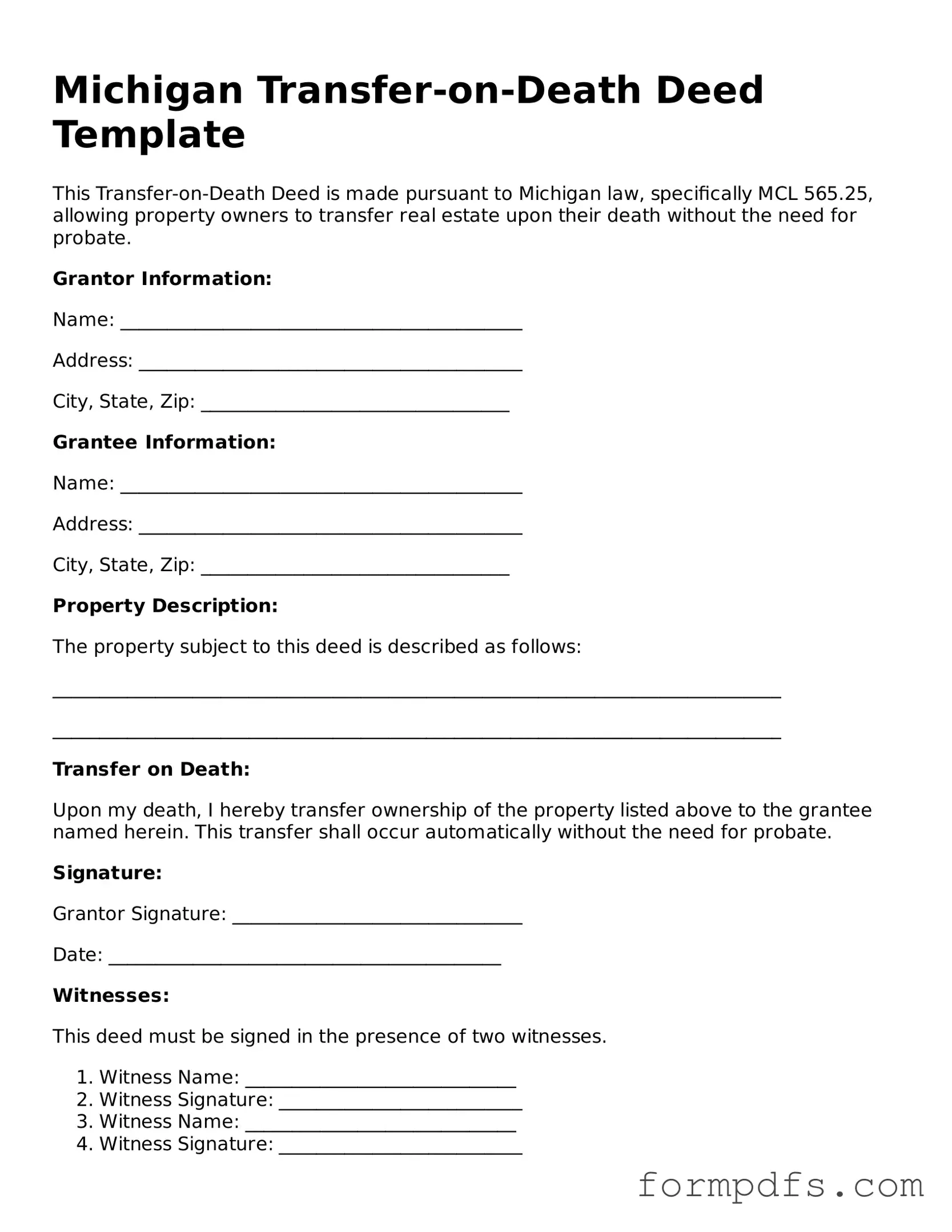What is a Michigan Transfer-on-Death Deed?
A Michigan Transfer-on-Death Deed allows a property owner to transfer real estate to a beneficiary upon their death without going through probate. This deed is revocable during the owner's lifetime, meaning the owner can change or cancel it at any time before death.
Who can use a Transfer-on-Death Deed in Michigan?
Any individual who owns real estate in Michigan can use a Transfer-on-Death Deed. This includes homeowners, property investors, and anyone holding title to real property. However, the deed cannot be used for certain types of property, such as jointly owned property or property held in a trust.
How do I create a Transfer-on-Death Deed?
To create a Transfer-on-Death Deed, you need to fill out the appropriate form, which includes details about the property and the beneficiary. After completing the form, it must be signed by the property owner in the presence of a notary public. Finally, the deed must be recorded with the local county register of deeds to be effective.
Can I change the beneficiary after creating the deed?
Yes, you can change the beneficiary at any time while you are alive. To do this, you must execute a new Transfer-on-Death Deed that names the new beneficiary and record it with the county. The original deed will remain valid until it is revoked or replaced.
What happens if the beneficiary dies before me?
If the beneficiary named in the Transfer-on-Death Deed dies before you, the property will not automatically transfer to them. Instead, you may want to create a new deed naming a different beneficiary or specify alternate beneficiaries in the original deed to avoid complications.
Are there any tax implications for using a Transfer-on-Death Deed?
Generally, there are no immediate tax implications when using a Transfer-on-Death Deed. The property is not considered part of your estate for probate purposes. However, the beneficiary may be subject to property taxes and other taxes upon your death, so it's wise to consult a tax professional for specific advice.
Can a Transfer-on-Death Deed be contested?
Yes, a Transfer-on-Death Deed can be contested in certain circumstances. If someone believes they have a valid claim to the property, they may challenge the deed in court. Common reasons for contesting include lack of capacity, undue influence, or improper execution of the deed.
Is a Transfer-on-Death Deed the same as a will?
No, a Transfer-on-Death Deed is not the same as a will. A will takes effect only after your death and goes through probate. In contrast, a Transfer-on-Death Deed transfers property directly to the beneficiary without the need for probate, simplifying the process and potentially saving time and costs.
Where can I find the Transfer-on-Death Deed form in Michigan?
You can find the Transfer-on-Death Deed form on the Michigan Department of Licensing and Regulatory Affairs (LARA) website or through your local county register of deeds office. It’s important to ensure that you are using the most current version of the form to avoid any issues.
